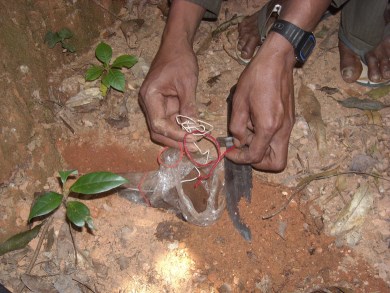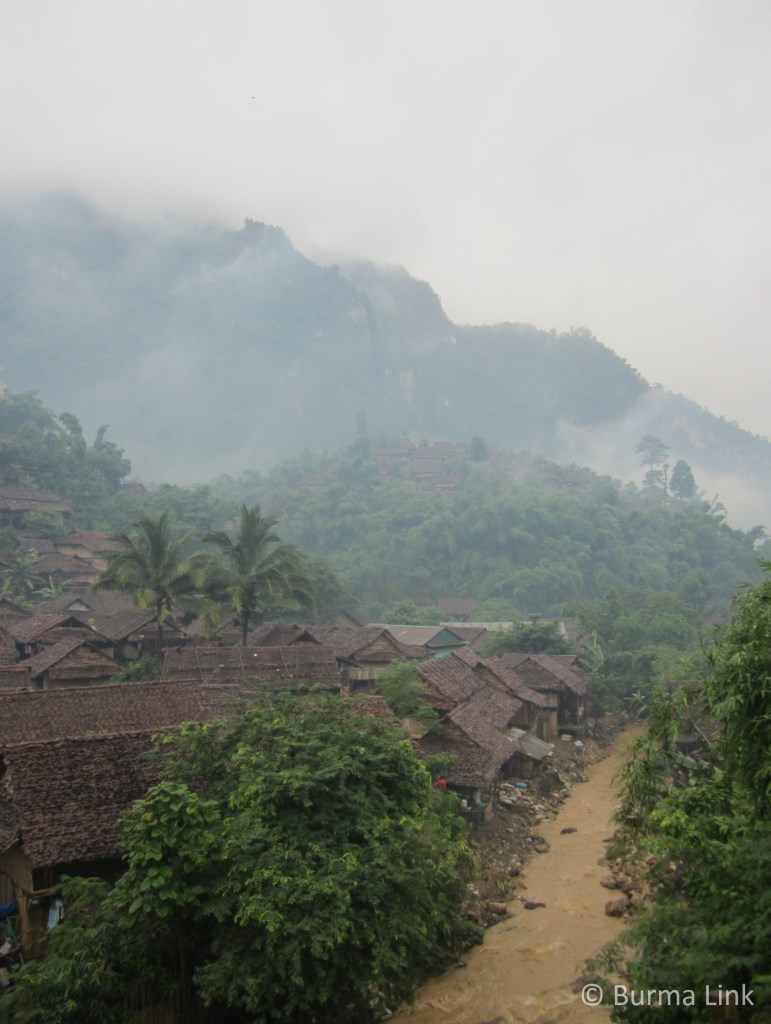The conflict in Burma involves a predominantly urban movement struggling to achieve greater accountability and democracy as well as an overlapping set of conflicts between the central government and ethnic nationalities. While both essentially stem from the same source; the military’s attempt to control the country’s ethnic nationalities and their resources, the international community has often focused solely on the urban political movement: Burma was brought to the world’s attention when the Burmese military violently suppressed the 8888 uprising as well as the monk-led Saffron revolution in 2007. The struggle for democracy by Daw Aung San Suu Kyi and other political prisoners has widely captured the world’s attention.
The long struggle of ethnic nationalities for equal rights and autonomy, and the grave human rights abuses that have occurred predominantly in outlying ethnic areas, has arguably received inadequate attention. The Burmese military has undertaken massive counter-insurgency campaigns against ethnic opposition armies, which have deliberately targeted ethnic civilians and resulted in systematic and widespread human rights violations. While many problems in Burma touch on the lives of all Burmese citizens, it is ethnic nationalities who have suffered the most.
Access to many areas is denied to international human rights NGOs and local groups continue to conduct cross-border operations to reach vulnerable populations, mostly from the Thailand-Burma border. Inside Burma, those who criticise the government’s human rights record have been systematically and severely repressed (FIDH, ALTSEAN-Burma, & BLC, 2009) and rights abuse has been silenced even after the NLD-led Government took office (see e.g. Hogan, L., June, 2016). While changes are being introduced, and criticising the government is becoming more acceptable, activists who speak out about past and current abuses still continue to face harassment and arrest (AAPP, 2013b, August 2016).
Documenting human rights violations in Burma continues to be a challenge and fieldworkers put themselves at great risk to document the abuse; human rights workers in Burma have been routinely targeted by the government security forces and face surveillance, intimidation, arrest, and imprisonment (ND-Burma, 2012c, 2016a). It is likely that the number of human rights violations found represents a small fraction of the actual abuse taking place as many victims and survivors fail to report what has happened to them out of fear of further reprisals. Furthermore, areas on ongoing armed conflict in the Kachin and Shan States are underrepresented in recent documentation as access to these areas is restricted (ND-Burma, 2014a, 2016a).
Nevertheless, ongoing human rights violations have been consistently documented by numerous international and local organisations, including Human Rights Watch, Physicians for Human Rights (PHR), Amnesty International, The Border Consortium (TBC), Assistance Association for Political Prisoners (AAPP), Backpack Health Worker Team (BPHWT), Network for Human Rights Documentation – Burma (ND-Burma), Karen Human Rights Group (KHRG), Karen Women’s Organisation (KWO), Shan Human Rights Foundation, (SHRF), Shan Women’s Action Network (SWAN), and Kachin Women’s Association Thailand (KWAT). Since the 1990s, multiple United Nations organs have also documented and condemned serious human rights abuses committed under the military regime. These include the UN General Assembly, the Commission on Human Rights, the Human Rights Council, numerous Special Rapporteurs on the Situation of Human Rights in Myanmar
The most commonly documented human rights abuses have involved portering, minesweeping, forced labour, torture and ill treatment, as well as land confiscation and forced displacement. Recent findings suggest that the most common current abuses are torture and killings, which have starkly increased since 2015 (ND-Burma, 2016a). There are also reports of military offensives against innocent civilians and the use of rape as a weapon of war against ethnic women (e.g. KWO, 2010; SHRF & SWAN, 2012; WLB, 2014a). According to all observers, the violations in Burma are systematic and widespread, and the perpetrators enjoy almost total impunity, which is enshrined in the military-drafted 2008 Consitution that cannot be changed without the consent of the military.
Discriminatory practices against women and ethnic nationalities in Burma have historically been widespread and the Burma Army troops are known to use rape against ethnic nationality women as part of their military strategy. Ethnic nationalities are discriminated against in all spheres of society, and educational, health and social services have been largely destroyed in the ethnic states. Many have argued that the actions of the Burmese army in Karen, Karenni, Shan, Mon, Chin and Arakan states count as genocide (see e.g. La Guardia, June, 2005; Rogers, 2004), and more recently in Kachin State (U.S. Campaign for Burma, 2012b).

A KNLA soldier removing a DKBA-deployed landmine from a frequently used road in Pa’an District, in December 2008. (Photo: KHRG)
The people of Burma also suffer from widespread environmental destruction, an HIV/AIDS epidemic, trafficking in of women and girls, ongoing laying of landmines as well as religious persecution. Internal Displacement Monitoring Centre (IDMC) estimates that there were up to 662,000 IDPs due to conflict and violence in Burma as of March 2015 (IDMC, 2016a). IDPs routinely lack security, food, education, and access to health care (click here to download the recent joint report on Mon IDPs in Burma).
Millions of people from Burma also remain in neighbouring countries where majority of them live as undocumented aliens subject to abuse and exploitation. While the country has recently released hundreds of political prisoners, at least 206 remained behind bars in August 2016 (AAPP, August 2016). Prisoners in Burma are commonly tortured, denied liveable conditions, sometimes killed, and often held without charges or beyond their sentences (e.g. AAPP, 2012, 2016a).
Today, abuses continue to occur despite the 2015 elections and the installation of the NLD-led administration headed by the State Counsellor Daw Aung San Suu Kyi. Despite some reformist laws and promises of policy changes by the new government, documentation indicates a continuation, and in some areas an increase, of human rights violations in ethnic regions. The effects of the government reforms have yet to reach rural ethnic areas in the country’s borderlands and peace process is yet to be inclusive. According to the most recent human rights situation report by ND-Burma, covering the period between January and June 2016, there has been a stark increase in violations during the first six months of 2016 as compared to the year 2015 (ND-Burma, 2016a).
Considering the newly ignited attention towards Burma by foreign governments and international actors, documenting human rights violations in Burma remains vitally important. As many governments and international actors are in the process of reviewing their relations with Burma, the need for accurate information about human rights violations is arguably more important than ever. Furthermore, many ethnic opposition groups are currently moving closer to ceasefire agreements with the Burma Army. Since research suggests that ceasefires can lead to even more abuse of ethnic villagers, documenting the voices of the ethnic communities is crucial. Ethnic voices must not be silenced by the international community’s praise for the Burma Government’s reforms.
In order to develop mutual trust and to move forward, the government of Burma must acknowledge that torture and other violations are taking place, take steps to end these practices, and to address the complex needs of survivors and provide them with some measure of restitution. One of the most important issues for victims is that moving forward or forgiveness cannot ignore the past. As grave human rights violations have been perpetrated in Burma with total impunity, systemic reforms that establish accountability for perpetrators of violations are essential. Furthermore, for a genuine transition to a functioning democracy, the NLD-led Government must guarantee full political participation by ethnic nationalities and access to essential services by all people of Burma.
Updated September 29, 2016
Continue to Human Rights Reports
